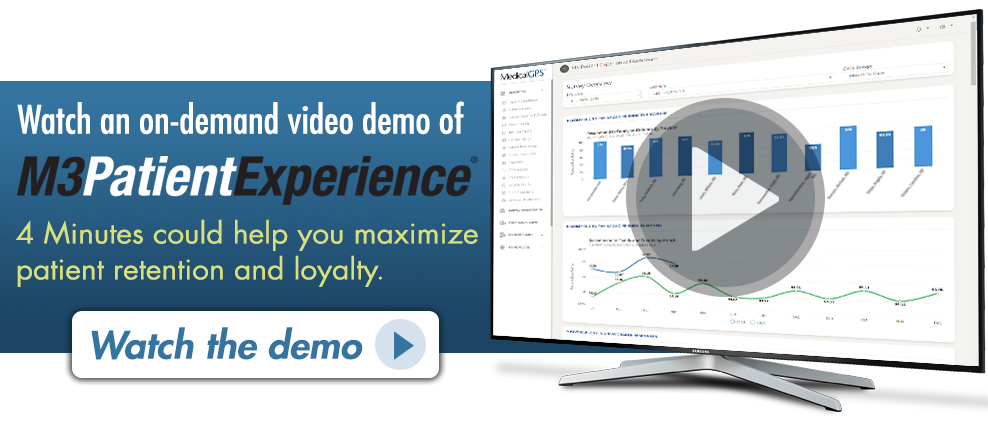 Creating an environment that encourages patients to take an active role in their ongoing care separates the ordinary healthcare organization from the extraordinary healthcare organization. A great healthcare organization demonstrates great patient engagement.
Creating an environment that encourages patients to take an active role in their ongoing care separates the ordinary healthcare organization from the extraordinary healthcare organization. A great healthcare organization demonstrates great patient engagement.
In 1995 I had the opportunity to “transition” from the airline business into healthcare. While the two industries have many differences, they also have many similarities. One similarity is the word “passenger” and the word “patient”. Both words of course refer to the consumer. Both words can also have a negative impact on how the consumer is treated by staff.
 For example, some airline employees place the consumer (passenger) in a position of, “just do what I tell you to do – it’s for your safety”. There is a lot of truth in that statement and there’s certainly value in the ‘do as I say’ approach, especially when flying through inclement weather, experiencing en route mechanical failures, and other moments of potential crisis. Unfortunately, some airline employees find it hard to mentally switch back — out of the crisis-management mode — back into the ‘we’re here to serve you’ mode after the potential crisis has passed. The problem was so bad at one major airline that employees were directed by management to stop using the word “passenger” and replace it with the word “customer”.
For example, some airline employees place the consumer (passenger) in a position of, “just do what I tell you to do – it’s for your safety”. There is a lot of truth in that statement and there’s certainly value in the ‘do as I say’ approach, especially when flying through inclement weather, experiencing en route mechanical failures, and other moments of potential crisis. Unfortunately, some airline employees find it hard to mentally switch back — out of the crisis-management mode — back into the ‘we’re here to serve you’ mode after the potential crisis has passed. The problem was so bad at one major airline that employees were directed by management to stop using the word “passenger” and replace it with the word “customer”.
Some would argue that the word “patient” can have a similar, negative impact within healthcare organizations.
“Almost every industry has changed the term for the people they serve…the big exception? Health care. To those in the field, whether it’s clinicians or researchers or pharmaceutical marketers, we are all “patients” — even when we feel fine and aren’t in a hospital or doctor’s office.
It’s time to stop categorizing people this way, which puts them in submissive and dehumanizing roles.
Imagine what would happen if clinicians called the people they treat “clients” or “activated consumers” or “partners.” With that mindset, they move away from implying what they will do to or for them, and instead describe what they will do with them as proactive partners.” – Dr. Summer Knight (1)
 Some patients may be disenchanted by the fact that they’re not valued as consumers. Even so, the term “patient” certainly helps many healthcare providers put their focus where it belongs: on the wellbeing of those for which they provide care. “Customers” on the other hand may want certain medical procedures or medications that are not medically necessary. To completely ignore the patient’s wants and desires is a disservice to both the patient and to your healthcare business.
Some patients may be disenchanted by the fact that they’re not valued as consumers. Even so, the term “patient” certainly helps many healthcare providers put their focus where it belongs: on the wellbeing of those for which they provide care. “Customers” on the other hand may want certain medical procedures or medications that are not medically necessary. To completely ignore the patient’s wants and desires is a disservice to both the patient and to your healthcare business.
For those healthcare professionals that are completely locked into the traditional ‘patients-are-patients, do as I say’ paradigm, they may be missing an opportunity to partner with their patients/customers to improve the patient experience and patient care. There’s a balance here that must be embraced to succeed in today’s consumer-driven healthcare environment. It’s been my experience that it is all about having an attitude of empathy and not so much about terminology.
Healthcare organizations of all kinds are taking a fresh look at delivery of care, service quality, workflow, patient flow, technological support (patient portals, smartphone apps), and even their pricing structures when possible, so that each may be examined from the patient’s perspective, in a consumer-focused way. When it comes to customer service and quality care, successful healthcare organizations are attentive to patient needs, but not at the expense of forgoing the outstanding service their customer’s demand.
Great patient engagement happens when healthcare consumers are engaged in their care as well as have a say in the service they experience while receiving that care.
“The Sweet Spot: When Patient Experience and Engagement Interconnect
This is where the magic happens. Patient engagement is an absolutely vital part of the patient experience. It’s the cornerstone of the relationship between you and your patients. Patient engagement builds and nurtures that relationship — and that influences everything the patient experiences along the way.
So, what’s the opportunity for healthcare providers who want to up their patient experience game?
Patient engagement offers a refreshingly direct path to a better patient experience. If you improve engagement, you improve the overall patient experience. It’s almost like getting two for one.
Start with your patient engagement. Look for ways to reach out and involve your patients in their care. Each touchpoint is an opportunity to feed a positive patient experience.” (2)
 Gathering Patient Feedback IS Patient Engagement
Gathering Patient Feedback IS Patient Engagement
Patients/customers hold the key to healthcare organizations’ success. To truly understand what the patient/customer thinks about their care, patient/customer feedback must be gathered intelligently, and then used effectively. Not only should patients/customers be asked about their overall experience, but each component of the patient experience is important. Physicians, nurses, and other staff on the front-line are interacting with patients/customers and each are engaged in personal interactions that make a difference. Each plays an enormously important role in making sure that the patient encounter is etched in the patient’s/customer’s mind as a memorable, favorable experience, which raises the level of patient loyalty. (3) Acknowledging and acting on patient feedback, both positive and negative, engages the patient and makes for a strong patient-care team relationship.
“When digital solutions are married with human engagement, interjected at just the right time, and paired with actionable data and information, such platforms can transform patients into ‘informed, connected health consumers’ who proactively manage their health and well-being.” — Lee Shapiro (4)
 Measuring, Monitoring, and Maximizing Patient Loyalty
Measuring, Monitoring, and Maximizing Patient Loyalty
Top-performing organizations approach business operations differently as it relates to day-to-day operations. Just having an analytics platform available to operating managers with all the interesting graphics, tables of data, and stoplight reports, will not, by itself, effect positive change. Teaching analytics competency across the organization is the key. Part of competency involves knowing what to do with the information once you have it and then acting on that knowledge.
“Too many organizations focus on cure-all solutions, home runs, moonshots, or major transformational initiatives. Truly innovative companies proceed one step at a time, demonstrating measurable outcomes each step along the way.” (5)
Having patient/customer feedback on-demand in real-time and teaching front-line managers how to effectively manage with that real-time information is the key to putting patient/consumer feedback (analytics) to work for your organization. Using real-time patient experience feedback allows service recovery to happen just hours following a service failure, fostering improved patient satisfaction, increased customer loyalty, and a better overall patient experience.
 Diagnosing Root Causes, Not Symptoms
Diagnosing Root Causes, Not Symptoms
Think of analytics as the first signs of symptoms that point to a potential root cause. Even after the symptoms are known, having that data without the ability to accurately analyze, and ultimately act on the data, is useless. However, in the hands of a skilled professional data/information/analytics; they hold great power. A Deloitte study had this to say, “What will help is the ability to turn insight into action…Giving data to untrained staff, working in an unprepared culture, is careless and dangerous like giving matches to children—they may be able to get a flame, but it often ends up in tears.” (6)
Even good data in the hands of well-intended managers becomes worthless unless it’s appropriately acted upon. A company that promotes analytics competency embraces the use of data/information/analytics such that decision-makers know what to do and are encouraged to act. Acting on sound analytics is the difference between success or not.

Please let us know if you have comments or questions, and subscribe to our Email Updates so that you can be assured to receive Thinking Thursdays TIPs.
Thank you!
Jerry
Jerry L. Stone
Co-Founder/COO
MedicalGPS, LLC
References:
- https://www.statnews.com/2021/05/13/lets-banish-term-patient-from-the-health-care-lexicon/
- https://www.pomelohealth.ca/blog/patient-experience-vs-patient-engagement
- https://www.fiercehealthcare.com/hospitals/3-8-from-if-disney-ran-your-hospital-by-fred-lee-patient-loyalty-more-important-than
- https://www.forbes.com/sites/forbesbusinesscouncil/2021/11/04/how-to-empower-todays-healthcare-consumer/?sh=15163fc6792f
- https://hbr.org/2021/06/legacy-companies-need-to-become-more-data-driven-fast
- https://www2.deloitte.com/content/dam/Deloitte/nl/Documents/deloitte-analytics/deloitte-nl-data-analytics-point-of-view-becoming-an-insight-driven-organisation.pdf

